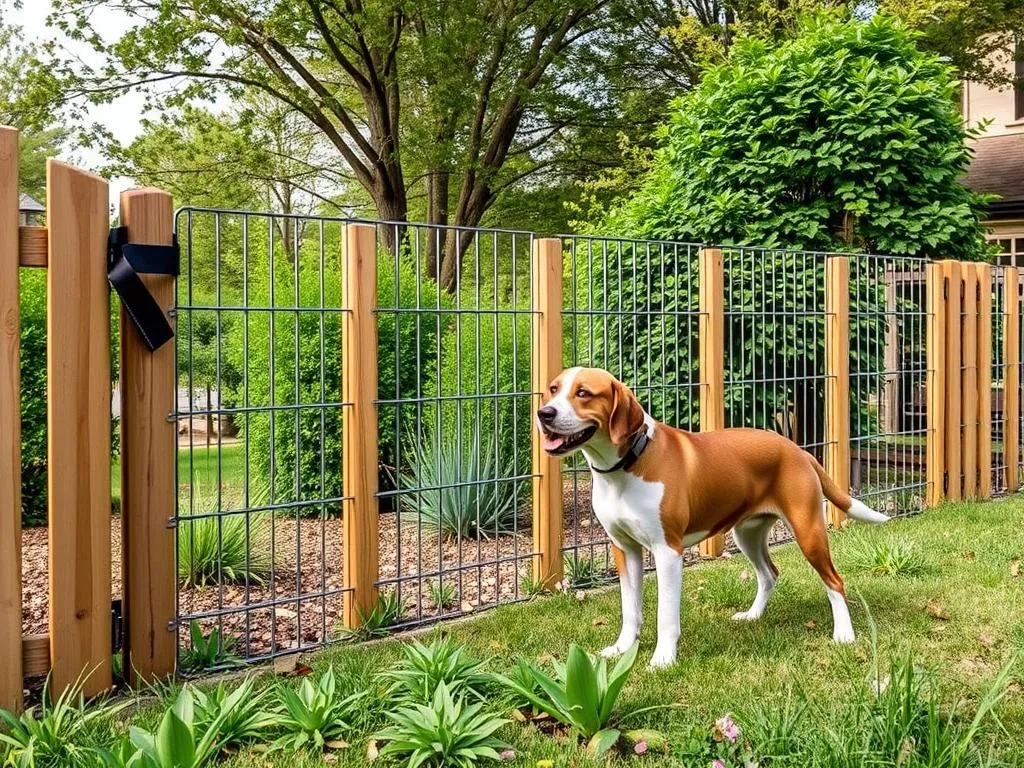
Invisible dog fences are an increasingly popular choice for pet owners seeking to provide their dogs with the freedom to roam while keeping them safe within designated boundaries. These systems offer a blend of security and convenience that traditional fencing often cannot match. Understanding the cost to install an invisible dog fence is crucial for pet owners considering this option. This guide will delve into the intricacies of invisible dog fences, including their benefits, installation costs, and what to expect during the process.
Understanding Invisible Dog Fences
What is an Invisible Dog Fence?
An invisible dog fence consists of a buried wire or a signal emitted from a transmitter that creates a boundary for your pet. When your dog approaches this boundary, a collar worn by the dog emits a warning sound, and if the pet continues, it delivers a mild static correction. This method helps teach the dog to stay within the set limits.
There are two primary types of invisible dog fences: wired and wireless systems. Wired systems involve burying a wire around your property, providing a precise boundary. In contrast, wireless systems create a circular boundary around a transmitter, which can be adjusted to cover varying distances.
Benefits of Invisible Dog Fences
Invisible dog fences come with multiple advantages:
- Enhanced safety for pets: These fences prevent dogs from wandering into traffic or other dangerous areas.
- Greater freedom for pets: Unlike traditional fences, invisible fences allow for a larger area of play without the physical limitations.
- Aesthetic advantages: Invisible fences maintain the natural beauty of your yard, avoiding the visual clutter that comes with physical fencing.
Considerations Before Installation
Before installing an invisible dog fence, consider the following factors:
- Types of dogs and their temperaments: Some breeds may not respond well to the training associated with invisible fences, while others adapt quickly.
- Size of the yard and layout: A larger yard may require more extensive systems or additional equipment.
- Local regulations: Always check community guidelines regarding pet containment to ensure compliance.
Factors Influencing the Cost to Install an Invisible Dog Fence
Equipment Costs
The first step in understanding the cost to install an invisible dog fence is to consider the necessary equipment. Typically, you’ll need:
- Collars: These are essential for your dog to receive the signals.
- Transmitters: They create the boundary and send signals to the collar.
- Wiring (for wired systems): This is buried around the perimeter of your property.
Prices vary significantly based on brand and model. On average, you can expect to pay anywhere from $150 to $500 for basic systems, while premium options can reach upwards of $1,500.
Professional Installation vs. DIY
Choosing between professional installation and a DIY approach can significantly impact your overall costs:
- Professional installation: Hiring a professional can ensure that everything is set up correctly. The cost typically ranges from $300 to $1,000, depending on the complexity of the installation.
- DIY installation: While this option can save you money, it requires tools and a good understanding of the installation process. The initial equipment cost remains, but you might spend approximately $50 to $150 on additional materials.
Size of the Area
The size of your yard directly affects the cost to install an invisible dog fence. Larger areas require more equipment and potentially more complex systems. For example:
- Small yards (under 1 acre): Expect to spend around $150 to $500.
- Medium yards (1-2 acres): Costs can range from $500 to $1,200.
- Large yards (2+ acres): You may need to budget $1,200 and above, especially for high-quality systems.
Terrain and Landscaping
The type of terrain can also influence costs. Uneven ground or thick vegetation can complicate the installation process, possibly leading to additional expenses for labor or materials. If the ground is rocky or heavily landscaped, you may incur extra costs, often ranging from $100 to $300.
Warranty and Maintenance Costs
Most manufacturers offer warranties for their products, typically lasting between one and five years. Understanding warranty options is essential, as it can save you money on repairs or replacements. Additionally, consider ongoing maintenance costs, such as:
- Battery replacements: Collars often require new batteries every few months, costing around $10 to $30 each time.
- Collar adjustments: As your dog grows or if you switch pets, you might have to adjust or replace collars.
Average Cost Breakdown
Nationwide Averages
Across the U.S., the cost to install an invisible dog fence varies by region. On average, homeowners can expect to pay:
- Northeast: $600 to $1,200
- Midwest: $500 to $1,000
- South: $400 to $800
- West: $700 to $1,500
These averages can fluctuate based on local labor costs and equipment pricing.
Price Range for Different Systems
Invisible dog fences are available at various price points, allowing for budget flexibility:
- Budget-friendly options: These typically range from $150 to $400 and cover basic features.
- Mid-range systems: Expect to pay between $400 and $800, offering better range and more features.
- Premium systems: Costs can exceed $1,000, providing advanced features such as multiple collar compatibility and longer ranges.
Hidden Costs to Consider
Be mindful of potential hidden costs that can arise post-installation:
- Repairs or upgrades: If your system malfunctions or if you wish to expand the area, costs can increase.
- Long-term maintenance: Battery replacements, collar adjustments, and potential repairs can add to your overall expenses.
Installation Process
Preparing for Installation
Before installing an invisible dog fence, take the following steps:
- Measure your yard: Create a precise layout to determine the required materials.
- Mark boundaries: Identify where you want your pet to roam and any restricted areas.
- Choose the right system: Research different models and select one that fits your yard size and your dog’s temperament.
Step-by-Step Installation Guide
For those opting for a DIY installation, follow these steps:
- Lay out the wire: Follow your marked boundaries, ensuring the wire is buried or secured according to the manual.
- Connect the transmitter: Set it up where it can effectively communicate with the collar.
- Test the boundary: Once everything is in place, test the system to ensure it works properly.
Post-Installation Tips
After installation, ensure your dog understands the new boundaries:
- Training sessions: Spend time training your dog to recognize the warning signals.
- Monitor effectiveness: Regularly check the system and adjust as necessary to ensure your dog’s safety.
Pros and Cons of Invisible Dog Fences
Advantages
Invisible dog fences offer several benefits:
- Freedom and range for pets: Your dog can explore a larger area without physical barriers.
- Reduced visual clutter: The absence of physical fences keeps your yard looking spacious and unobstructed.
- Effective deterrent: With proper training, dogs learn to avoid boundaries, preventing escape.
Disadvantages
However, there are also drawbacks to consider:
- Limitations for certain breeds: Some breeds may struggle with the training process or be more prone to boundary confusion.
- Potential for shock: Although mild, some pet owners are uncomfortable with the idea of using static correction.
- Initial costs: The upfront investment can be a barrier for some homeowners.
Alternatives to Invisible Dog Fences
Traditional Fencing Options
For those considering alternatives, traditional fencing is a viable option. Types include:
- Wooden fences: Attractive and customizable but can be costly and require maintenance.
- Vinyl fences: Durable and low-maintenance but more expensive upfront.
- Chain-link fences: Cost-effective but less visually appealing.
When comparing costs, traditional fencing can range from $1,500 to $5,000, significantly more than most invisible dog fence systems.
Other Pet Containment Solutions
Other options for pet containment include:
- Pet gates: Ideal for smaller areas but may not provide full yard coverage.
- Playpens: Effective for temporary containment but lack the freedom of a yard.
While these options can be effective, they often do not provide the same level of freedom as invisible dog fences.
Conclusion
Choosing the right containment system for your pet is crucial for both their safety and your peace of mind. Understanding the cost to install an invisible dog fence involves considering equipment, installation, and ongoing maintenance. Weighing the pros and cons, along with evaluating your specific needs and budget, will help you make an informed decision. By ensuring your pet’s safety while maximizing their freedom, you can create a harmonious environment for both you and your furry friend.









